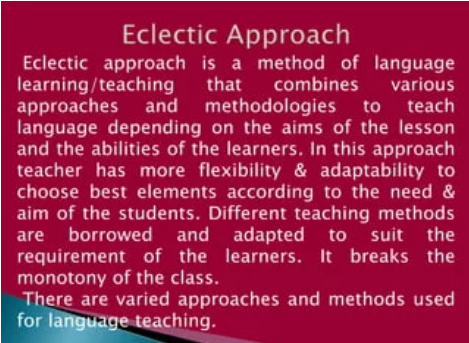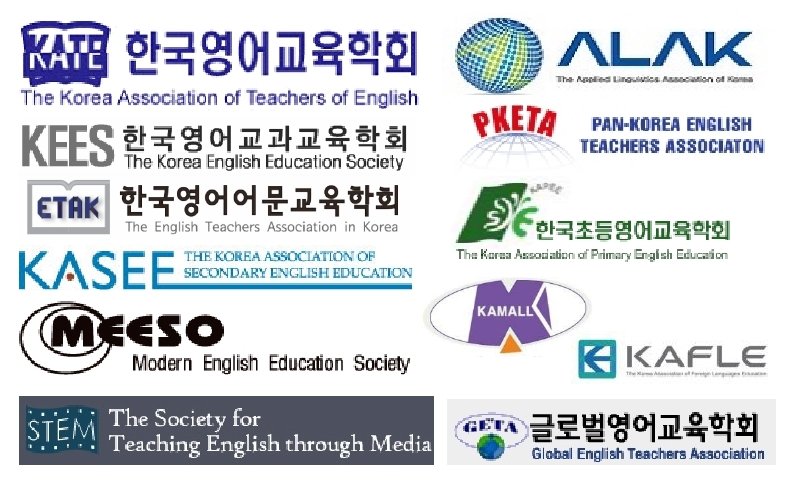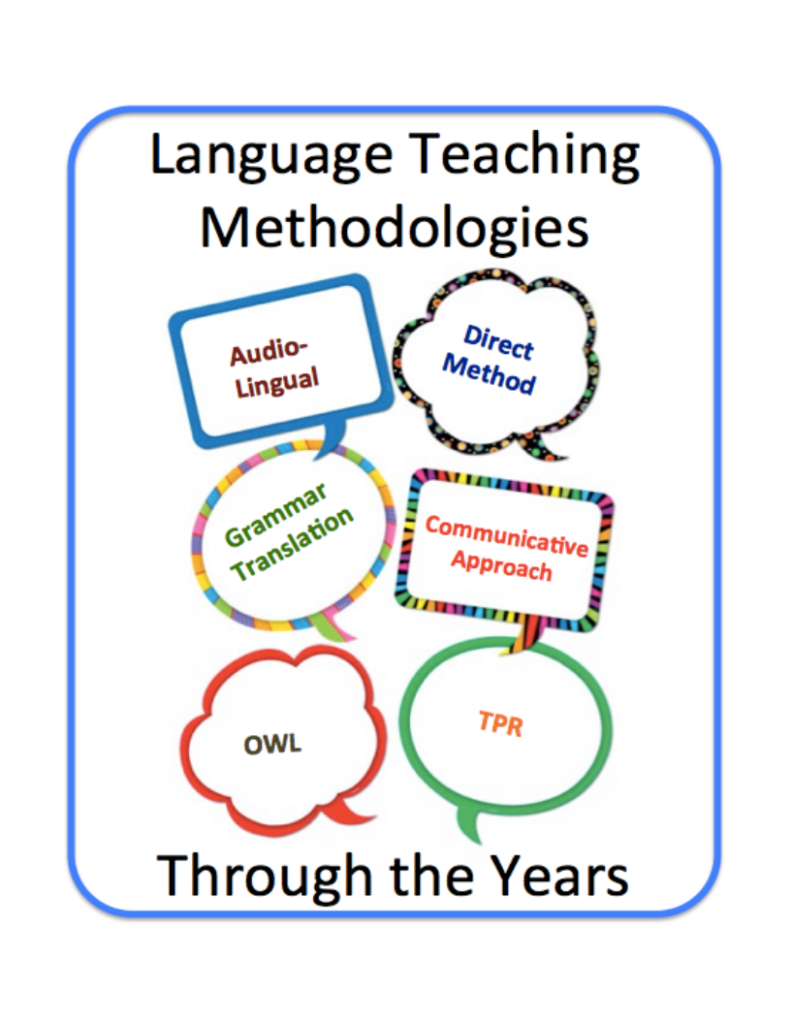Traits That Very Good English Teachers Exhibit
By David Shaffer
Have you ever sat back in your most comfortable chair and reflected on yourself as a teacher? Have you thought about what the most important traits are for an English teacher to possess and then considered how strong you were in each of those characteristics? This is something that we all should do, and do regularly, to improve ourselves as teachers. I think it is safe to say that no teacher is equally strong in all good teacher traits – if such a person were to exist, they would probably have moved into the business field, where they could rake in an income that would place them in a much higher tax bracket than that of teachers.
Let’s consider the following (short and by no means exhaustive) list of teacher characteristics and, as we do, reflect on how strong (or how weak) we may personally be in each of the characteristics, and consider what we can or should do to strengthen ourselves in that teacher trait. As you are reflecting, you need not stop with the items listed below; add your own items and reflect on them also.
These are some of the traits of good English teachers:
Understanding of the Subject Matter
It is obvious that any teacher should be well versed in the subject that they are teaching. And of course, an English teacher should be skilled at and have an excellent understanding of the English language. The trap that it is so easy to fall into as an English as a foreign language teacher whose first language (L1) is English is to falsely assume that “because I am a native English speaker, I have expert skills in English.” Think back on your English classes and consider how many times you answered a student’s grammar question with “Well, we just say it that way” or with “Hmm, I really don’t know.” And how many times, after giving an answer to a student’s question, have we thought to ourselves, “I didn’t give a very satisfactory answer to that question.” Our students deserve better than this. It is not enough to just know instinctively whether something is grammatical, idiomatic, or the correct pronunciation. We need to be able to clearly explain to our students the “why” of their questions about English. This can be done in many ways: through self-study, short courses, or more formal degree work.
Using Current Teaching Methodology and Techniques
In addition to having a foundation in how English works, anyone involved in English teaching needs to have a firm foundation in teaching pedagogy. It is so easy as a teacher to just fall back on teaching the way we were taught. But doing that merely perpetuates the use of old and often outdated methodology. As a case in point, when I began my university teaching in Korea, the grammar-translation method with textbooks of short stories was used throughout the freshman English courses. Relying on the teaching methodology and techniques that you were taught in your TESOL certificate or TESOL degree program is only sufficient for a short period of time. New and innovative teaching methods, approaches, techniques, and strategies are constantly being developed that are more efficient and more appealing. It is incumbent upon us as teachers to keep abreast of these developments, try them out, and incorporate into our teaching those that suit our teaching contexts.
Using a Well-Balanced Approach
One of the reasons for the downfall of the audio-lingual method was that it was very limited in the type of activities that it employed. Likewise, a major liability of the grammar-translation method was that it focused only on written translation and grammaticality (listening and speaking skills were not developed). And a handicap of both was that they were strongly teacher-centered. More recent and more widely accepted approaches to language teaching, such as communicative language teaching (CLT) also have their drawbacks due to being limited in scope. CLT, for example, in its original strong version, did not allow for the overt teaching of grammar, vocabulary, or pronunciation!

Many ESL/EFL teachers found themselves straitjacketed. They saw a need for teaching all of the four macroskills (reading, writing, listening, and speaking) and also microskills (such as pronunciation, grammar, vocabulary, and summarizing). What many decided upon was a “pick-and-choose approach”: the selection of effective activities from different teaching methodologies, new or not-so-new, for teaching their students in their current contexts. What many language teachers now use is what is referred to as the eclectic approach. Incorporated into such a syllabus or the lesson plan are techniques and methods from a variety of methodologies. For example, a teacher may employ drills (the mainstay of the audio-lingual method) for pronunciation practice, may occasionally incorporate written translation work for grammar practice, and may also use task-based language teaching (TBLT) and project-based learning (PBL) at other times. We must select the methods and techniques that best meet the needs of our students and the courses we teach. There is no single “best method.” Contexts vary so much in student characteristics, curriculum characteristics, and even teacher characteristics that teachers may even need to vary their lesson plans for different cohorts of students taking the same course.
Being a Lifelong Learner
Being a teacher does not exclude the possibility of being a learner at the same time. Indeed, one of the traits of a good teacher is continuing to learn new things throughout their teaching career. This learning can be formal, informal, or a combination of the two. Formal learning most often refers to degrees, diplomas, and certificates beyond one’s bachelor’s degree (e.g., MA in TESOL, MA in applied linguistics, a PGDE, and a CELTA). More and more EFL teachers in Korea are getting advanced degrees and teaching certificates due to the convenient availability and high quality of partially and fully online programs.
Informal learning for EFL teachers comes in a wide variety of forms: reading teachers’ handbooks, such as the excellent Cambridge Language Teaching Library series; reading ELT magazines (e.g., EFL Magazine and The English Connection); reading the latest research in scholarly journals, such as TESOL Quarterly and the Korea TESOL Journal; and going to the internet for convenient reading materials, such as ELT blogs, and teaching resources of all kinds.
I don’t mean to suggest that reading is the only form of informal learning nor that it is something that must be done alone. Many teachers find great reward in keeping a reflective teaching journal. Sharing your teaching successes as well as your teaching concerns with a colleague can lead to valuable insights. Having a more experienced colleague as a mentor can lead to new and improved skills and procedures. Rather than a mentor–mentee relationship, or in addition to it, pairs of teachers can form what Thomas Farrell terms “critical friendships” in which they collaboratively and comfortably give each other support as well as frank suggestions and advice on how to solve problems and improve their teaching. These critical friendships may even include peer classroom observations.
Additional things that a teacher may do as a learner are attending webinars, seminars, workshops symposia, and conferences. These are but a few of the continued learning activities that you may take part in during your career as a teacher. The point is that the good English teacher is also a person who seeks out learning opportunities throughout their teaching career – being a lifelong learner.

Belonging to a Professional Learning Community
When you think of it, the language teacher, in many ways, is a loner. When they are in the classroom, they are often the only teacher there. When not having class, they are often at their lone desk in their dedicated classroom, or in their enclosed cubicle in their teachers’ room, or alone in their university office. It is a life of much isolation from one’s peers; there is little opportunity for interaction with colleagues, and we know that interaction is advantageous, if not crucial, to self-development.
Teachers, like other humans, are social creatures; they thrive on interaction with others. What teachers can do to overcome the inherent occupational disconnect with their peers is participate in professional groups. Professional learning communities (PLCs) may vary greatly in size and formality. One type of professional learning community is a book club of sorts, where the group selects a TESOL-related book and gathers regularly to discuss its contents. If you don’t know of one, create one! Another form of PLC is the group of EFL teachers in the same workplace who meet regularly to discuss lesson-planning strategies for their textbooks, materials development, student disciplinary problems, administrative directives, and much more. These PLCs may include periodic workshops organized by and for the members of the PLC. If your workplace doesn’t have a PLC, create one!
PLCs need not be centered within a single institution. EFL teachers in neighboring schools may come together to form a PLC similar in function to the workplace PLC described above. Such a PLC would be exceptionally valuable and easy to form if the group members belong to the same organization, such as the Jeollanamdo Language Program (JLP) or Gwangju’s English Program in Korea (EPIK).
As I mentioned earlier, PLCs come in all sizes; some are nationwide associations. In fact, Korea has about a dozen nationwide English teaching organizations (ETOs) of which Korea TESOL, or “KOTESOL” for short, is one. There are also various other related associations focusing on English language and literature and on linguistics. There is sure to be at least one of these organizations that will meet your needs and desires. I have personally belonged to many of Korea’s ETOs simultaneously and found it very rewarding. Korea’s ETOs are quite similar in that they each have a regularly published academic journal and an annual conference, while some do differentiate themselves in their main focus (e.g., multimedia, elementary education, testing, or applied linguistics). [For more on Korea’s ETOs, see Language Teaching in the August 2019 issue of the Gwangju News.]

While KOTESOL also has an academic journal and an international conference – one that is well known throughout Asia and beyond – there are several things that set this organization apart from other ETOs in Korea. A majority of KOTESOL’s members are expats, and the language of its events and publications is English. While it has annual national and international conferences, it also has regional chapters that organize their own events. For example, the Gwangju-Jeonnam Chapter holds monthly workshops on ELT topics, organizes an annual conference, and enjoys after-meeting dinners. KOTESOL also has an array of special interest groups (SIGs) – from classroom management to reflective practice to research to social justice to Christian teachers – something for everybody! And any member can belong to as many SIGs as they wish.
I started out in KOTESOL as an attendee at workshops and conferences and as a reader of its publications. Later, I became involved in giving presentations at KOTESOL events and submitting articles to KOTESOL publications. While I still do these things, I am now also involved in organizing our conferences and editing our publications. I have learned a lot professionally through KOTESOL. While, as a PLC, KOTESOL is strong on the P (professional) and strong on the L (learning), I feel confident in saying that it is stronger than Korea’s other ETOs on its C (community). Learning thrives on social interaction, and it is KOTESOL’s sense of community that makes it so valuable as a professional learning community – and as a huge source of lifelong learning. (Check it out at koreatesol.org.)
Here we have discussed only five traits of good language teachers: (a) understanding one’s subject matter, (b) using current teaching methodology and techniques, (c) using a well-balanced approach, (d) being a lifelong learner, and (e) belonging to a professional learning community. There are others that are equally important, and we will discuss them in future articles in this column. In the meantime, sit back, prop your feet up on your footstool, and reflect on what you might do to make yourself an even better teacher – and learner.
Gwangju-Jeonnam KOTESOL Upcoming Events Gwangju-Jeonnam Chapter Workshop
- Topic: Navigating Korean Workplace Culture in Educational Settings – by David Kim
- SwapShop Topic: Tips for Showcasing Professional Development
- Date: May 13, 2023
- Venue: Gwangju National University of Education
Check the Chapter’s webpages and Facebook group periodically for updates on chapter events and other online and in-person KOTESOL activities.
For full event details:
- Website: http://koreatesol.org/gwangju
- Facebook: Gwangju-Jeonnam KOTESOL
The Author
David Shaffer, PhD, has been involved in TEFL, teacher training, writing, and research in Gwangju for many years as a professor at Chosun University. As vice-president of the Gwangju-Jeonnam Chapter of KOTESOL, he invites you to participate in the chapter’s teacher development workshops and events (in person and online) and in KOTESOL activities in general. Dr. Shaffer is a past president of KOTESOL and is the editor-in-chief of the Gwangju News.




